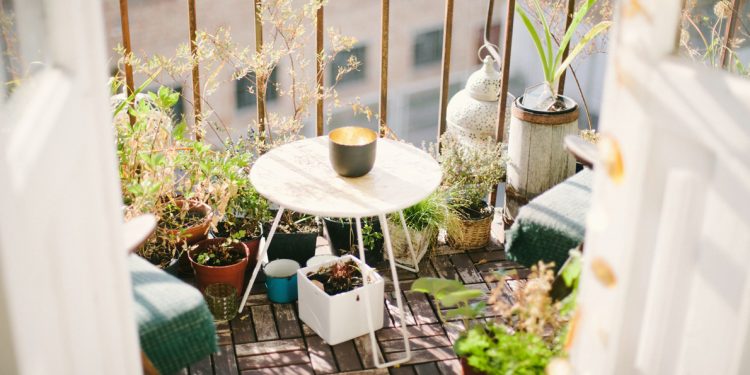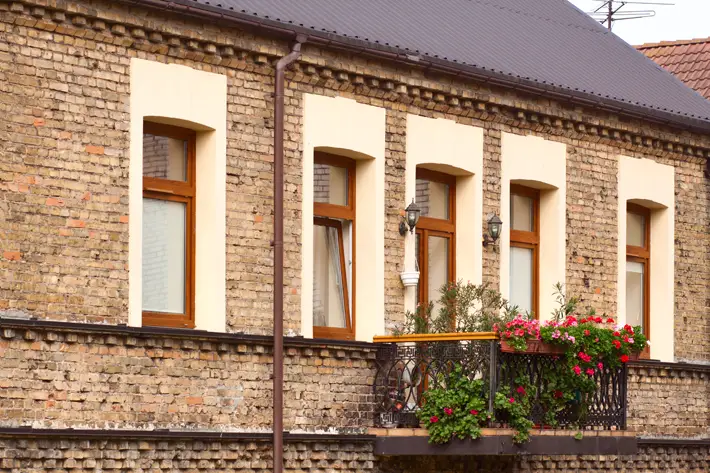With The Drop in Temperature, Your Balcony Garden Could Use a Little TLC

If you have access to a balcony, you can grow various flowers, veggies, herbs, perennials, or vines. A garden can be started in pots and planters, which are simple to care for and maximise your growing space. A balcony garden is an ideal way to connect with nature, give your home character, and live a healthier, happier life. Tempting as it may be to forget all about the garden when it gets cold, there’s much to be done. It requires maintenance all year round, and the time and effort you put in the colder months will go a long way.
As the temperatures drop, it’s time to prepare your balcony garden for the winter. Indeed, nature has its own ways of dealing with and surviving the extreme cold, but there are a few things you can do to keep your greens healthy.
Insulate Your Pots and Planters
Resilient plants like pansies, hellebores, and cornels can survive the coldest winters, so you can count on them to take a polar vortex or two. However, if they’re planted in pots or planters, this is where things get tricky. Life in a container is a lot different than one in the ground. When the temperatures drop, greens are susceptible to frost damage, ground freeze, and death, so the pots and balcony planters should be adequately insulated. Insulation keeps the soil warm during cold months and protects plants enough to ensure continued health. Provide insulation for the plants so that the soil maintains a consistent temperature.
Leaves, mulch, bubble wrap, Styrofoam, and blankets have been used for years. These protective coverings help trap the heat and keep it at the root zone. The more layers you wrap around the containers, the better. Before the first frost, you should spray the leaves with an anti-desiccant spray to help preserve moisture throughout winter. The drainage holes in the pots and planters should be free from obstruction so the plants don’t get waterlogged. Ceramic and terracotta aren’t suitable for winterproof containers because they’re prone to cracking and breaking.
Move Sensitive Plants Indoors
Heaters are designed to warm large areas and shouldn’t be used in small or enclosed spaces. It’s best to bring sensitive plants indoors to avoid a chill injury. Due to drafts, these types of plants must be kept away from heat vents and out of entryways. Keep just the healthy plants and discard the ones with disease or pest problems. If you have planters on wheels, you can arrange your greens however you want. While it’s not necessary to repot the plants, you should at least refresh the soil. If your balcony is exposed to harsh weather, next time, plant aloe vera, lavender, or English ivy, to name a few.
Introduce Peat-Free Compost
Composting doesn’t have to come to an end during the cold months of the year. You can make your own compost, but if you’re feeling ambitious, invest in a wormery. The worms convert the organic (waste) material into valuable compost. Most things can go there, such as dead flowers and leaves. Equally, you can have a compost caddy designed to hold your waste and suitable for a balcony garden. Not only is the humus full of nutrients, but also available in sufficient quantities. Holes at the bottom of the container are essential so that oxygen can circulate inside – plus, you avoid the spread of unpleasant odours.
Water Well Before the Heavy Freeze
Your greens won’t need as much water during their dormancy as they do in spring or summer, but they still have some metabolic functions driven by water. Plants that remain dehydrated during wintertime don’t make it until the spring. The soil should be slightly moist, just enough so the roots don’t dry out. How often you should water the plants depends on the types of green you have, pot size, soil composition, light conditions, degree of humidity, and how warm/cool your home is. Remember that the plants are resting at this time, so don’t use ice-cold water. The best water for plants is at room temperature.
Rather than following a schedule, you should better check the potting mix you’re using in your containers by sticking your finger or a wooden stick. If the soil sticks, it’s moist enough, and you should wait a few days and recheck the soil. It’s easier to add water than to remove it, so you should opt for underwatering if you want to be cautious. Knowing how often to water the plants is crucial because most of them stop growing, and some even hibernate. While watering, make sure there’s room for excess water to escape via the pot or planter’s drainage holes.
Bring Your Plants Out of Dormancy
So, you’ve managed to make your balcony garden winterproof and care for delicate and hardy plants. Now what? Well, at some point, you’ll have to put everything back. Your plants need a few days or weeks to come out of dormancy after winter. Depending on the daytime temperature, it might take some time for the greens to re-emerge, so be patient, and you’ll no doubt see your plants awaken from their winter nap. If you want to retrieve them faster, place the pots and planters under full/direct sunlight, water them thoroughly, and fertilise them to boost growth.
Final Thoughts
Your garden balcony isn’t immune to challenges during the winter, so your plants can be affected by winter stress factors, including fluctuating temperatures, dry air, and short days. While most of us are equipped to handle the change of the seasons, the same can’t be said for plants. Some of the recommendations we’ve made in this article involve changing numerous variables and for this reason, you should monitor the greens daily to ensure they’re doing alright. As you buy new plants, pick ones that will thrive in the cold. The UK is renowned for having cold, wet, and dreary weather, so you need tough flowers, veggies, herbs, perennials, or vines. They’ll rebound when spring arrives.










